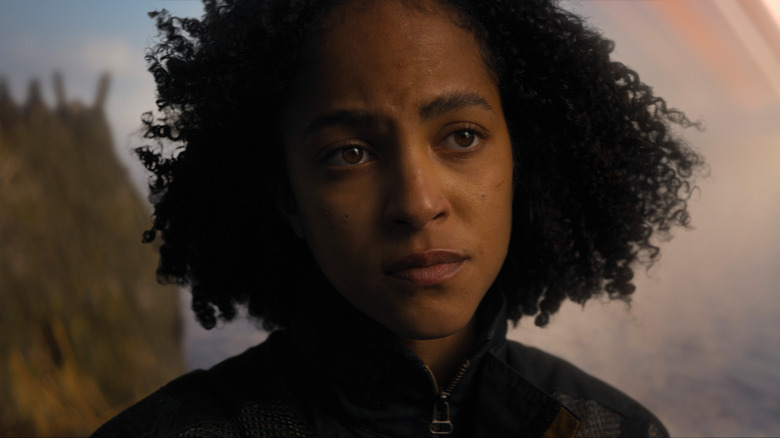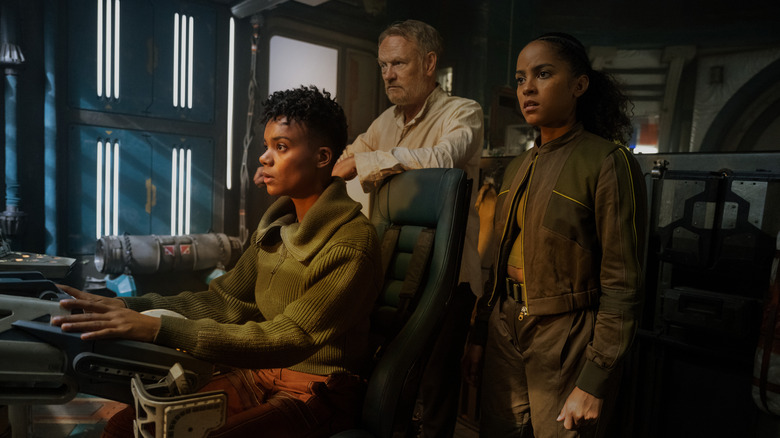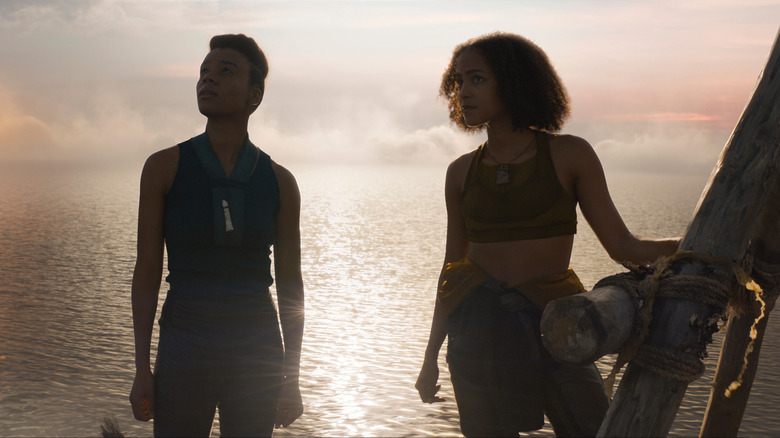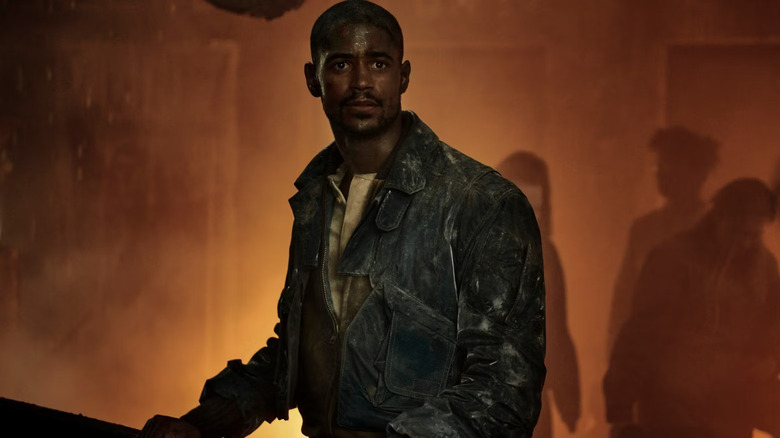Foundation Season 2 Changes Gaal, Salvor & Raych's Connection - Here's How
Contains spoilers for "Foundation" Season 2, Episode 1
Isaac Asimov's "Foundation" series may be an award-winning collection of sci-fi books, but that doesn't mean it's easy to adapt. On the contrary, many have called the triumphant novels "unfilmable." Part of the issue is the stop-start pacing of the books; much of the core trilogy of novels (there are seven in all) was originally written as a sequence of short stories for "Astounding Magazine" over the course of several years.
On top of that, the story traces the early centuries of a thousand-year-long story. Since we're dealing with human life spans, there is a necessary shuffling of characters every few chapters as decades fly by in the blink of an eye (character development is hardly one of Asmiov's strengths).
This has made Apple TV+'s "Foundation" series that much more entertaining, even for diehard fans, due to the dramatic and sweeping changes it has made to the disjointed source material. One of these major changes has been the introduction of consistent characters. Hari Seldon (Jared Harris) has shifted from an occasional pre-recorded hologram to a consistent, recurring digital copy of the character. The Emperor has evolved from a shadowy and generally unidentified series of individuals to a recurring set of genetic clones.
Others, including Gaal Dornick (Lou Llobell), Salvor Hardin (Leah Harvey), and Raych Foss (Alfred Enoch), have become integral parts of the story — even if their actual contributions are smaller in the books. One of the biggest changes to date is the intricate, biologically and cryogenically complex family of Gaal, Salvor, and Raych. Technically speaking, all three are related in the show ... even if nothing could be further from the truth in the source material.
How are Gaal, Salvor, and Raych related in Apple's Foundation series?
In Episode 1 of Season 2 of "Foundation," Salvor Hardin provides a quick summary of where things left off in Season 1. This is a continuation of the last scene of Season 1. Both Salvor and Gaal have exited cryostasis in the latter's home planet of Synnax 138 years in the future. They reconnect on the barren, water-covered planet, where Salvor fills her biological mom (and the audience) in with a quick recap; "My name is Salvor Hardin. I'm your daughter," she explains.
When Gaal objects that she doesn't have a daughter, Salvor reminds her of a certain donated embryo she provided over a century ago and explains that Gaal is her biological mom and Raych is her biological dad. This is a big deal, if only because Raych and Gaal had partnered up on the way to Terminus — and kept the entire thing secret from the Man with the Plan, Hari Seldon.
See? In the end, they all just became one big, happy, four-dimensional family spread across space and time. It's a fun way to tie everything together and it certainly raises the stakes for the individual characters. The audience is more invested in where they go, and now that Gaal and Salvor are together and both in their prime (the daughter is technically a tad older than her mom), they can work together. By the end of the episode, a livid digital Seldon escapes from a century-plus spent trapped in the Prime Radiant, too, which makes for a fun little isolated trio heading into Season 2. The thing that makes all of this even more interesting is that all of these biological and familial connections are brand new.
Gaal and Salvor in Asimov's source material
It's fun trying to sort through all of the connections between Gaal, Salvor, and Raych in "Foundation." The only thing is, when you go to the books for a little help, there's nothing there to help clarify things. Quite the opposite, in fact.
In the source material, the only connection that Gaal, Salvor, Raych, and Hari share is the one downplayed the most in the show. Hari and Raych are connected by adoption. That's it. In fact, in the author's original writings, Gaal and Salvor aren't even women. Gaal Dornick is still a brilliant young mathematician from Synnax, but he sticks with Hari and actually does help set things up on Terminus before disappearing from the early stages of the story, never to be heard of again.
Salvor Hardin is a cool, calm, and collected Mayor of Terminus who pops up a couple of generations after the Foundation is established. He confidently guides the nuclear-powered settlement through its early crises. Hardin is always thinking one step ahead, and the mayor nearly single-handedly gives the Foundation control over several of its militant, fossil-fuel-dependant neighboring planets. Once again, after he does this, he's unceremoniously ushered out of the story. He is unrelated to and never meets Gaal Dornick.
Raych and Hari in Asimov's source material
Finally, Raych has an interesting role in Asimov's books. He doesn't appear in the Foundation trilogy. Instead, he's a primary character in the pair of prequel books, which outline Hari Seldon's past career and his development of psychohistory and "The Plan" to save the galaxy.
As a child, Raych lives on the streets of Terminus, where Hari meets, saves, and eventually adopts him. He helps Hari with his life's work, and his daughter, Wanda, is a critical piece of Asimov's Mentalics concept (the mental powers that are clearly present in the show via Gaal and Salvor and will likely be developed more moving forward).
Once again, Raych never meets or is connected to Gaal or Salvor (who are male characters in the books). In fact, there is never a single meeting or collaboration between the three critical pieces of Hari Seldon's psychohistoric puzzle. Their cute-yet-complicated adapted family tree in the show is purely made up, well, for the show. That isn't a bad thing, though. In a vast, often incoherent sci-fi world, the bond between the trio of protagonists is clearly helping bring a sense of coherency and consistency to their otherwise disconnected contributions in the source material.



